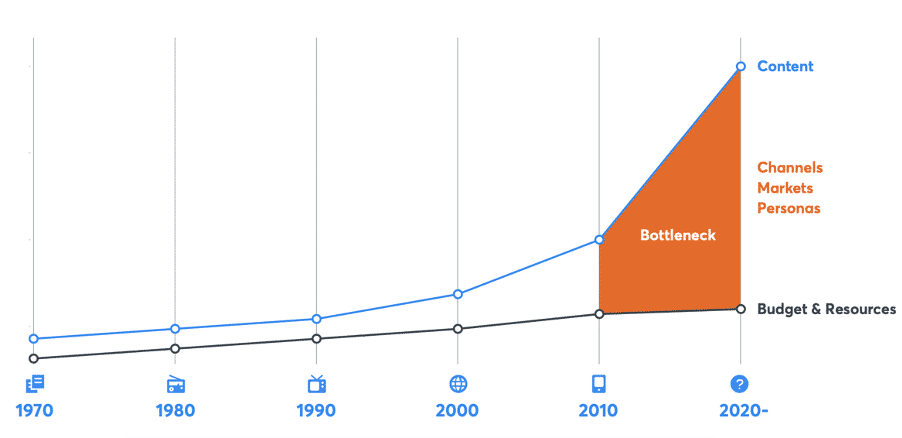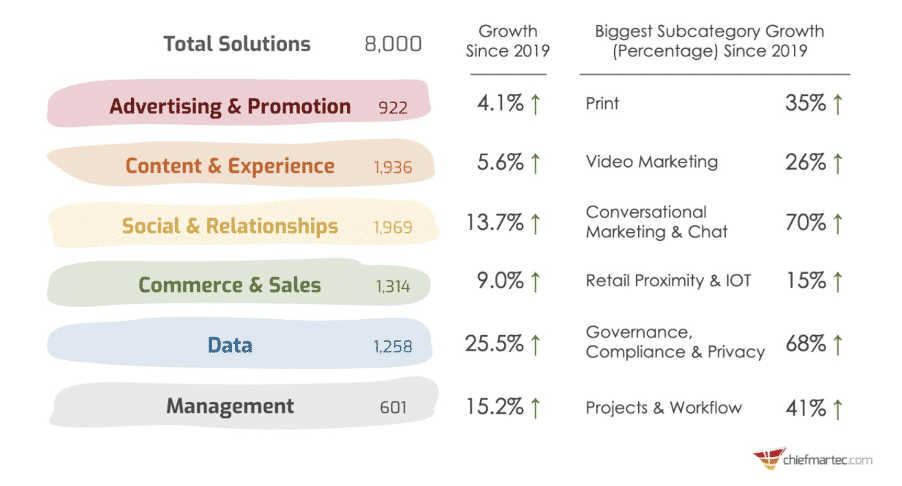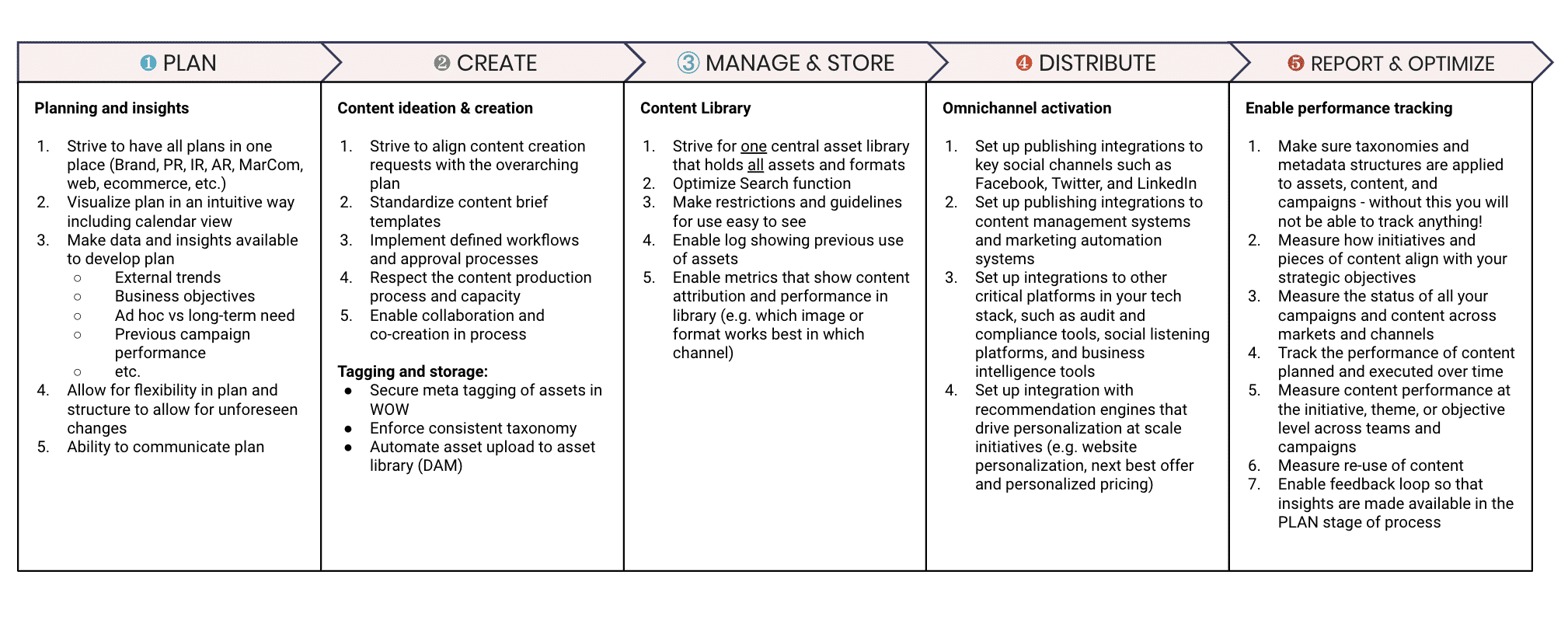The content management process is typically one of the most underdeveloped marketing processes in large enterprises – and one of the costliest. With increasing demands on personalisation, now is the time to address your content inefficiencies.
Content development is a major cost item in most marketing budgets. Many CMOs put their hopes in tools and technologies, to address content-related efficiency demands. In this blog, we demonstrate that the critical issues are primarily related to the people and processes involved in content development and production, not the technologies as such.
Increasing content efficiency requires first and foremost a transformation of the way people work and interact with one another. The complexity of the task oftentimes leads organisations to turn to outside support to help drive the change that they urgently need.
Is Content Production Your Biggest Budget Item?
Avaus and Gartner Research show that some of the biggest budget items are costs deriving from inefficiencies related to the use of technology – or lack thereof – and legacy processes that hinder new ways of working.
The Impact of COVID-19 on Marketing BudgetsDue to the proliferation of customer touch-points and expectations on personalisation, the requirements on content creation have drastically increased. Content is one of the most critical components of the customer experience, however, most companies still fail to deliver the right content, at the right time, in the right place, to the right customer.
Over the past 5-10 years, companies have invested heavily in data and analytics to develop the best recommendation engines to orchestrate personalisation at scale but failed to invest in content to fuel the experience. Data and analytics can now automate the next best actions and offers, but content processes are still mostly manual and often outdated.

Image source: Percolate (2020)
Expectations of marketing efficiency are high and resources scarce. Marketing is heavily reliant on technology to achieve shorter lead times, data-driven decisions, and optimisation of content processes. Hence, companies are increasingly seeking tools to address this and investments in content marketing technology are increasing year on year – Scott Brinker, Martech 5000, 2020. We expect further increases in this area in the coming years.

Image source: Chief Martech, 2020
Addressing Efficiency in Content Production and Management – End to End
Many make the mistake of addressing content creation as a technical challenge. We have found that processes and business models are as important as technology when you are looking to reduce inefficiencies.
In a prestudy for a retailer seeking to improve content efficiency, legacy processes and inconsistent ways of working turned out to be the greatest challenges. The best Content Marketing Platforms (CMPs), focus equally on people enablement as much as content optimisation. When everyday operations are made simpler it is easier to achieve business objectives.
Improving content production efficiency for a major retailerWe decided to look at all content processes within the client organisation and its agencies to identify the true pain points. Avaus’ methodology addresses the following five areas:
- Plan
- Create
- Store & Manage
- Distribute
- Report
Review the Content Management Process Step by Step
To identify the areas that automation, standardisation and technical solutions can support, we recommend that you analyse your content management process step by step:

1. Plan – Visualise and make it easily accessible
- Typical challenges: Transparency of plans, alignment between marketing teams and other parts of the organisation, lack of insights to guide planning, keeping the marketing plan up to date at all times, communicating changes in the plan.
- Typical solutions: Content Marketing Platform (CMP)
- The biggest challenge for implementation: defining the structure for your company’s brand and communications hierarchy, change management related to new ways of working.
2. Create – Optimise your content-creation processes
- Typical challenges: Inconsistent briefs and inefficient brief management, challenging to forecast capacity, lack of feedback loops, long editing processes, duplication of work, unclear handovers of work, agreeing on finalisation of work.
- Typical solutions: CMP, Dynamic content configuration tools, content modularisation
- The biggest challenge for implementation: mapping all existing processes to solve bottlenecks and develop a new and improved content production process, evolving agency collaboration, details related to the configuration of tools. Change management and training to bring everybody on board in one common process. A content strategy that allows for scalability.
3. Manage & store – One content repository, enforced meta-tagging on assets
- Typical challenges: Multiple asset libraries with similar content, lack of metadata, duplication of assets hinders search, searching for content, importing and exporting content.
- Typical solutions: Digital asset management (DAM); one repository for assets, enforces the use of naming convention, meta-tagging, KPIs on re-use of assets to drive positive behaviour.
- The biggest challenge for implementation: complex tech setup with internal dependencies can challenge the mitigation of several asset repositories to one, meta-tagging structure needs to be implemented, which includes changes to the way of working.
4. Distribute – Omnichannel activation
- Typical challenges: lack of sync between teams and channels, different messaging in different channels, manual work to publish, long lead-times
- Typical solutions: Content marketing platform that integrates with all digital channels to enable omnichannel activation
- The biggest challenge for implementation: buy-in to integrate with all channels to ensure omnichannel activation, change management to build trust and alignment between teams and channels previously operating in silos
5. Report – Automate manual reporting, make insights available to all
- Typical challenges: manual reporting from different channels, different ways of measuring success, misalignment between KPIs, multiple sources of truth (dashboards, excels, in-platform reporting)
- Typical solutions: Implementation of Business Intelligence tools (BI), such as Tableau or Domo that combine several sources of data and measure effect across multiple channels. Some CMPs include advanced built-in reporting capabilities.
- The biggest challenge for implementation: agreeing on a common set of KPIs, integrating with sources, visualisation of metrics in intuitive dashboards, change management related to new transparency on performance, and putting data at the centre of all operations.
Execution – the Change is Not Only About Implementing a Technology
Change that involves transforming the way people work and interact is complex and oftentimes leads organisations to turn to outside support to help drive the change.
While many make the mistake of thinking that a tool or technology will bring the needed structure, the critical issues are…
- Staying true to your business objectives and planning for execution all the way
- Following up on set targets
- Making tough decisions related to people and change management (changing people’s job roles, letting people go etc, managing resistance to change). Do not underestimate the amount of communication and support required during change processes.
- Persistence – driving change requires time and persistence. The more you think about transformation as a marathon rather than a sprint, the more likely you are to succeed
For the business-minded CMO, addressing the topic of efficiency will be a career milestone – and something that opens up a seat at the management table. With the business targets in mind and remembering that change requires a lot more than a tool, you are bound to deliver tangible margin impact to your organisation. Doing this proactively without being asked will make it even more likely.
Contact us